Under-the-radar bag labels to know
From New Zealand to Japan, get to know the under-the-radar bag labels eschewing trends in favour of long-lasting good design
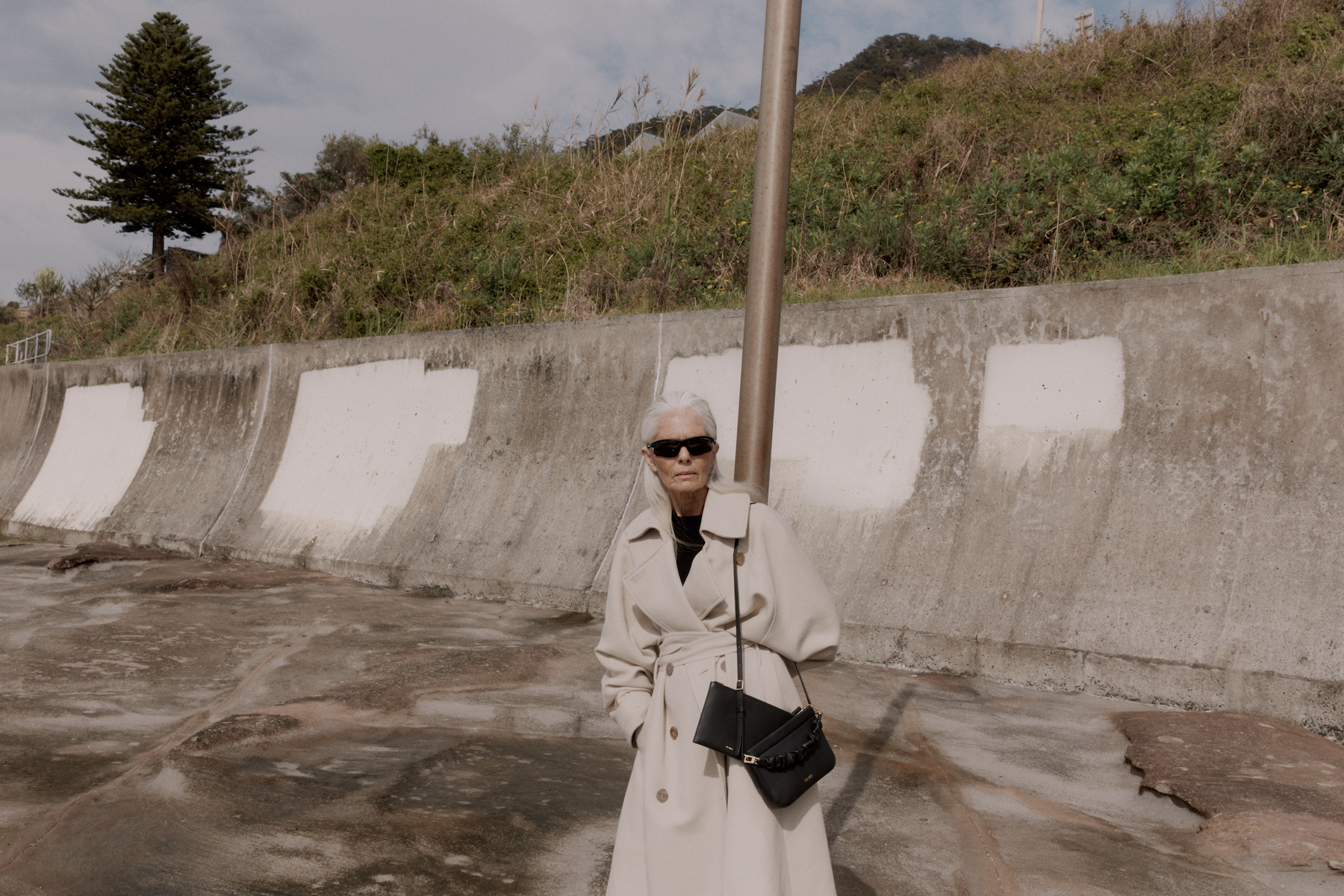
Eschewing trends in favour of longevity and responsible manufacturing, a wealth of under-the-radar bag labels are growing their following with something a little bit different – undefinable, but always considered. We round up the best burgeoning bag labels and designers to know now.
Under-the-radar bag labels to know
Little Liffner
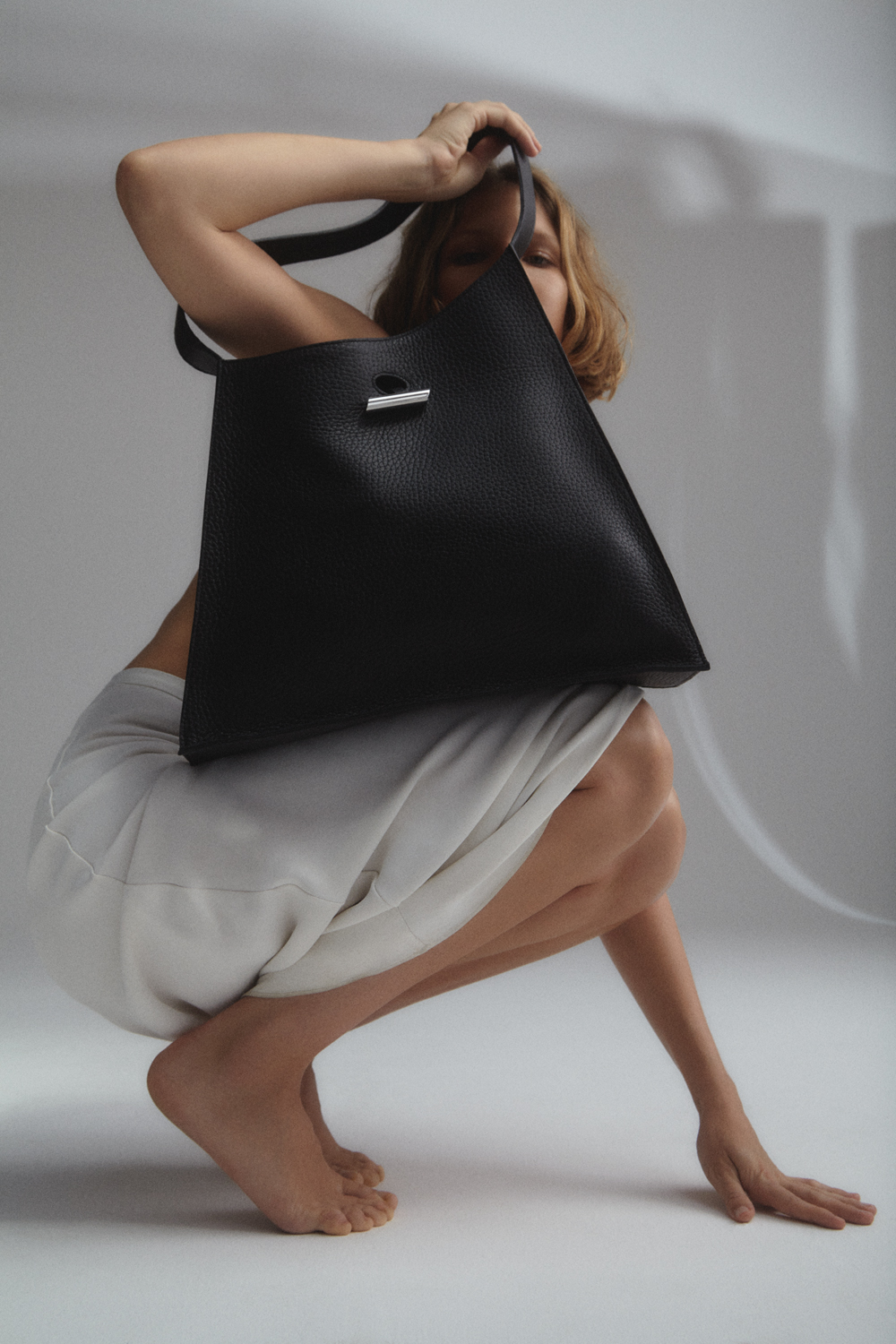
‘I found it hard to find a refined handbag that didn’t come with a price tag of a two-week vacation at the time, so I decided to try to create it myself,’ says Little Liffner founder Paulina Liffner von Sydow. She had worked in fashion editorial, PR and branding for many years before taking the plunge to launch her own line in 2012. A decade later, she remains the creative director and sole owner of the independent brand based in Stockholm. She produces what she calls her ‘subtle statement’ bags in a small family-run factory on the outskirts of Florence. Travelling between Scandinavia, Florence and New York, she takes inspiration from the many styles of global busy city life, creating ‘no-logo bags for confident women with no need or desire to show off labels’. She recently launched her first sustainably produced jewellery collection, too. Look out for: The ‘Tall Tulip’ tote, with deep proportions, a generous shoulder strap and undulating top.
Yu Mei

Hailing from the coastal city of Dunedin on the south island of Aotearoa, New Zealand, Jessie Wong set out to design her own bag when she needed something that would carry more than a lipstick and her phone. Yu Mei – Wong’s own middle name – was soon born. Taking inspiration from friends and their busy lifestyles, in colours borrowed from artist’s palettes, Wong’s maxim of ‘efficient, minimal design’ shapes the bags she’s been designing for her brand since 2015. ‘There’s creativity in all aspects of the business, not just in the design parts,’ says the third-generation Chinese New Zealander, now based in Wellington. ‘We’re particularly well known for our use of buttery soft deer nappa, a regenerative leather which is a byproduct of existing industries that would otherwise be wasted. We’re proud to be using this homegrown regenerative material that has both a low ecological footprint and unparalleled softness.’ When she’s not designing her refined, minimal bags, Wong is busy raising funds for the Wellington City Mission through its Bags For All campaign. Look out for: the softly structured and spacious ‘Theresa’ tote.
Objets Daso

The elegant manifestation of a ‘left brain right brain’ duo, wife and husband founders of Objets Daso – Catherine Whang and Pratik Vyas – marry strategy and innovation with a pedigree of luxury craftsmanship. After graduating from Central Saint Martins, creative director Whang went on to work for Dior, Celiné, Bally and Kilgour Savile Row while design strategist Vyas, a graduate of neuroscience from Kings College London, consulted for various London design agencies, helping brands to elevate and connect digitally with potential customers. The combination was the perfect launchpad for Objets Daso, meaning ‘objects’ (French) and ‘a person I love’ (pure Korean) in October 2022. Each handbag is meticulously constructed in Florence by leather specialists and features the brand’s custom push lock. Often naming styles after female innovators, practicality and beauty are considered in equal measure. Look out for: the angular ‘Hye’ shoulder bag, named after South Korean poet, artist and activist Na Hye Se, or the ‘Josephine’ (Baker) already sold out.
Receive our daily digest of inspiration, escapism and design stories from around the world direct to your inbox.
Wandler

Elza Wandler launched her eponymous brand in 2017, and has since expanded into shoes and apparel, which follow her propensity for clean modern lines and contemporary sherbet colours. She’s even experimented with some glass vases and objects for homeware: ‘clear in function and architectural in shape,’ as the Dutch designer describes. But it’s her functional, architectural bags that have won her legions of fans globally. Using premium bi-product Italian and French LWG-certified leather, her bags are made at family-owned factories in Portugal and Italy, and she points out that these ‘ethically sound, trusted partners’ are subject to stringent EU regulations and environmental guidelines. Straight-talking Wandler has company-wide green ambitions – ‘some small, some major’ – and a tree-planting partnership with Tree Sisters sees up to seven trees planted for each bag sale. Look out for: the satisfyingly square and squashy ‘Uma’ shoulder box bag.
Amstein

South London-based Laura Amstein is all about championing modern British craftsmanship: ‘Each bag and design plays its own special part in ensuring traditional leather skills continue to flourish and thrive today,’ she says. Amstein, who founded her eponymous brand in 2021 and was previously at Loewe, JW Anderson and Burberry, makes all her designs in the Midlands, working predominantly with GRS-certified recycled materials. Taking orders in advance via her website allows her to make exact quantities, avoiding waste. ‘It all began at a young age on the kitchen table – cutting, folding, sticking, weaving, splodging, splatting. Making things became a way of life. After designing for luxury leather goods brands in the UK and abroad, I decided it was time to get back to my own hands-on making adventure – you’ll find me creating, developing and refining from my bright, south London studio,’ says the designer who trained at the prestigious Royal College of Art. ‘There’s something magical about shutting the door on the outside world and settling down in the studio to a satisfying hands-on process. It’s a slow, meditative craft where each piece is treasured and cared for every step of the way.’ Look out for: the signature rigid ‘Block’ shoulder bag.
Amiacalva
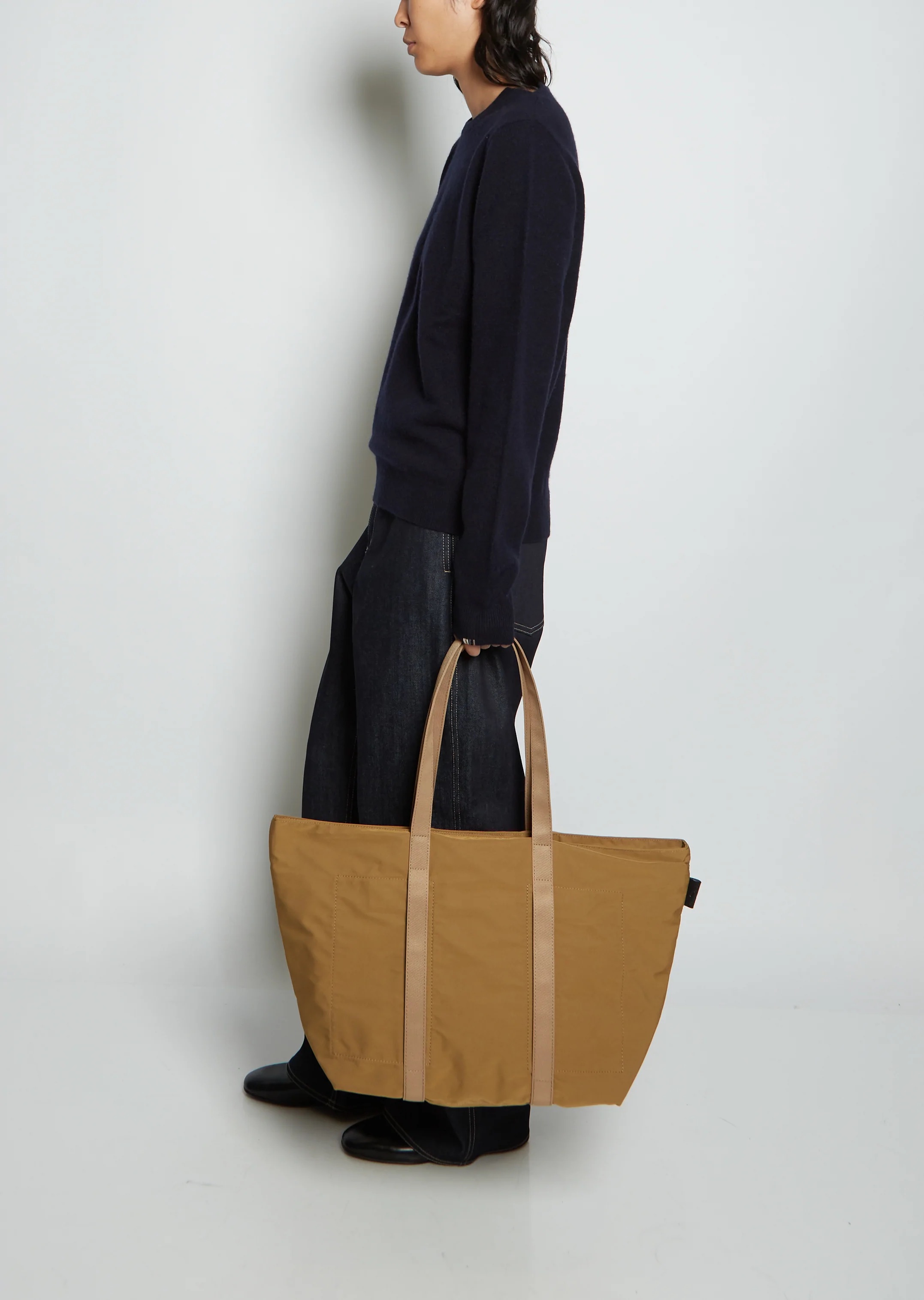
‘Amiacalva’ is an ancient fish name, explains Kato Kazunori, the Japanese designer and owner of this bag brand, who launched it 15 years ago after working for a Japanese bag manufacturer. ‘It’s an ancient fish surviving for centuries without evolving internally and externally. What we strive for is to seek perfection in both design and function, just like an ancient fish, Amiacalva has not needed any changes itself from birth.’ Indeed, consistency and simplicity have won the brand loyal fans over the years, as trends have peaked and waned. Innovation comes in responsible production and materiality: the 2023 collection used mangrove dying of organic cotton. ‘We use dyes extracted from mangroves that live in the Yaeyama Islands (Japan). A deep brown that cannot be produced with artificial dyes is extracted and dried by a single craftsman, and the raw materials are 100 per cent organic,’ explains Kato. Look out for: the lightweight canvas tote bags and backpacks.
Ree Projects

Desiree Kleinen was taught, aged eight, by her Caribbean grandmother how to make soap baskets from scratch, and began selling them door to door. Fast forward to 2019 and the designer, who has consulted for heavyweights including Karl Lagerfeld and Balmain, launches Amsterdam-based Ree Projects. Seeking to inspire change in the fashion industry, her made-in-Italy bags are concepted and produced with ethical fair trade practices at the core of the company and using carbon-neutral tanning processes. Kleinen says, ‘I want to create pieces that resonate intrinsically with who I am and the world around me. Fashion can be a force for good, and our aim is to slowly create with meaning and love, to make styles that empower women, and emphasize their unique strengths, and beauty.’
Yuzefi
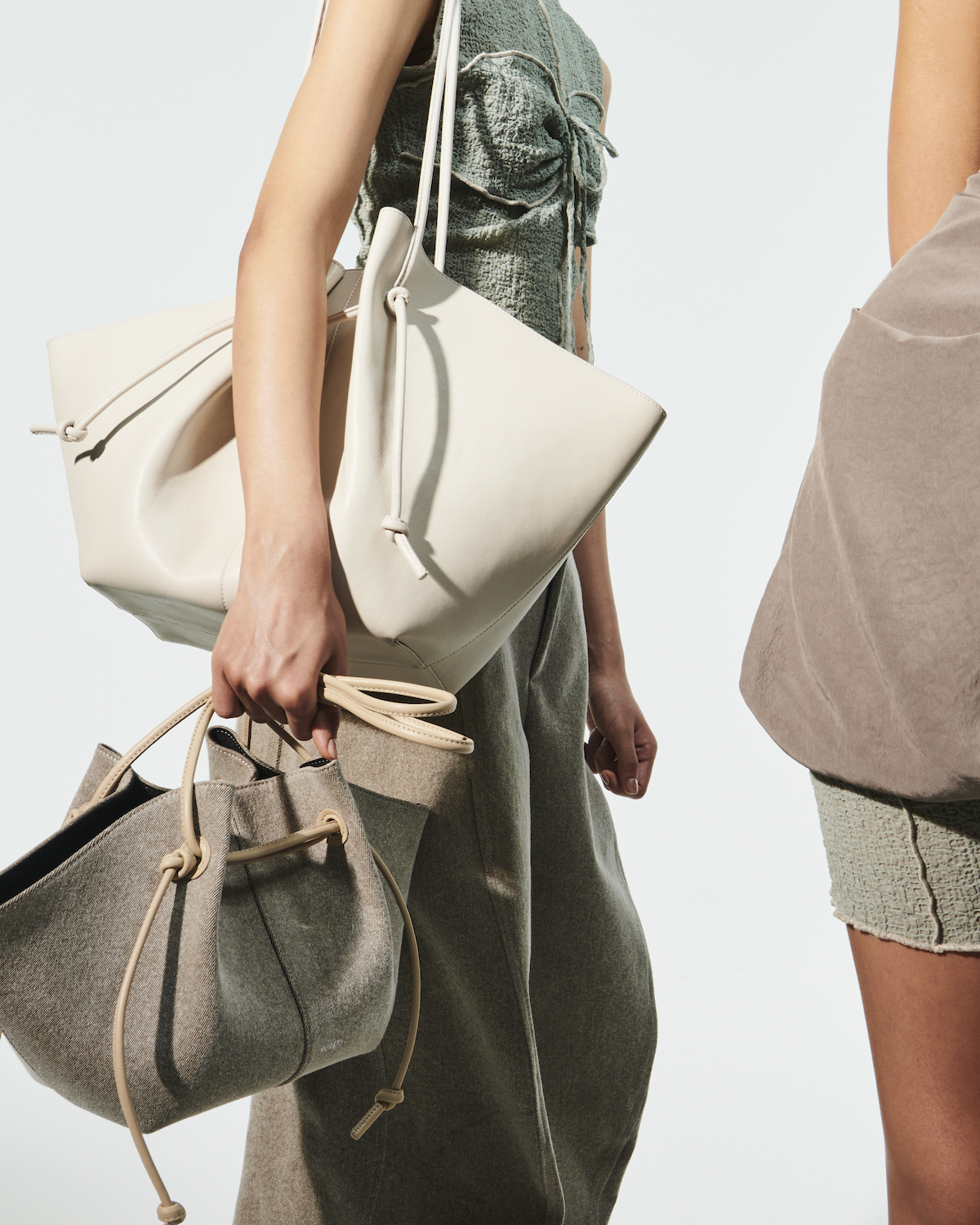
London-based Nazanin Yousefi was born in Iran and moved to London when she attended Central Saint Martins. Upon graduating, she worked stints for Christopher Kane and the late Richard Nicoll, before quietly beginning to make her own leather pieces – she soon received commissions from Hedi Slimane, Steven Klein and Patti Wilson for custom designs. Following the organic success of her early line, she launched Yuzefi in 2017, specialising in contemporary, original-shaped handbags, and still producing a few leather ready-to-wear items. Quality is of the highest standard – Yousefi works with one of the best tanneries in Italy, which holds the gold certification from the Leather Working Group and all pieces are made small-scale in Andalucia (only road transportation is used between Italy and Spain). Moreover, she only uses bi-product leather and recycled suede to line her bags. Yousefi started the brand ‘with a mission to bridge a modern and experimental aesthetic with traditional luxury craftsmanship. The brand was founded in 2017 and is regarded as one of the first disruptors in the contemporary handbag field, filling the white space with innovative designs that quickly built a cult following. Look out for: The new large suede ‘Mochi’ (other snack base styles include the ‘Wonton’, ‘Pretzel’, ‘Taco’ and ‘Fortune Cookie’).
Chylak
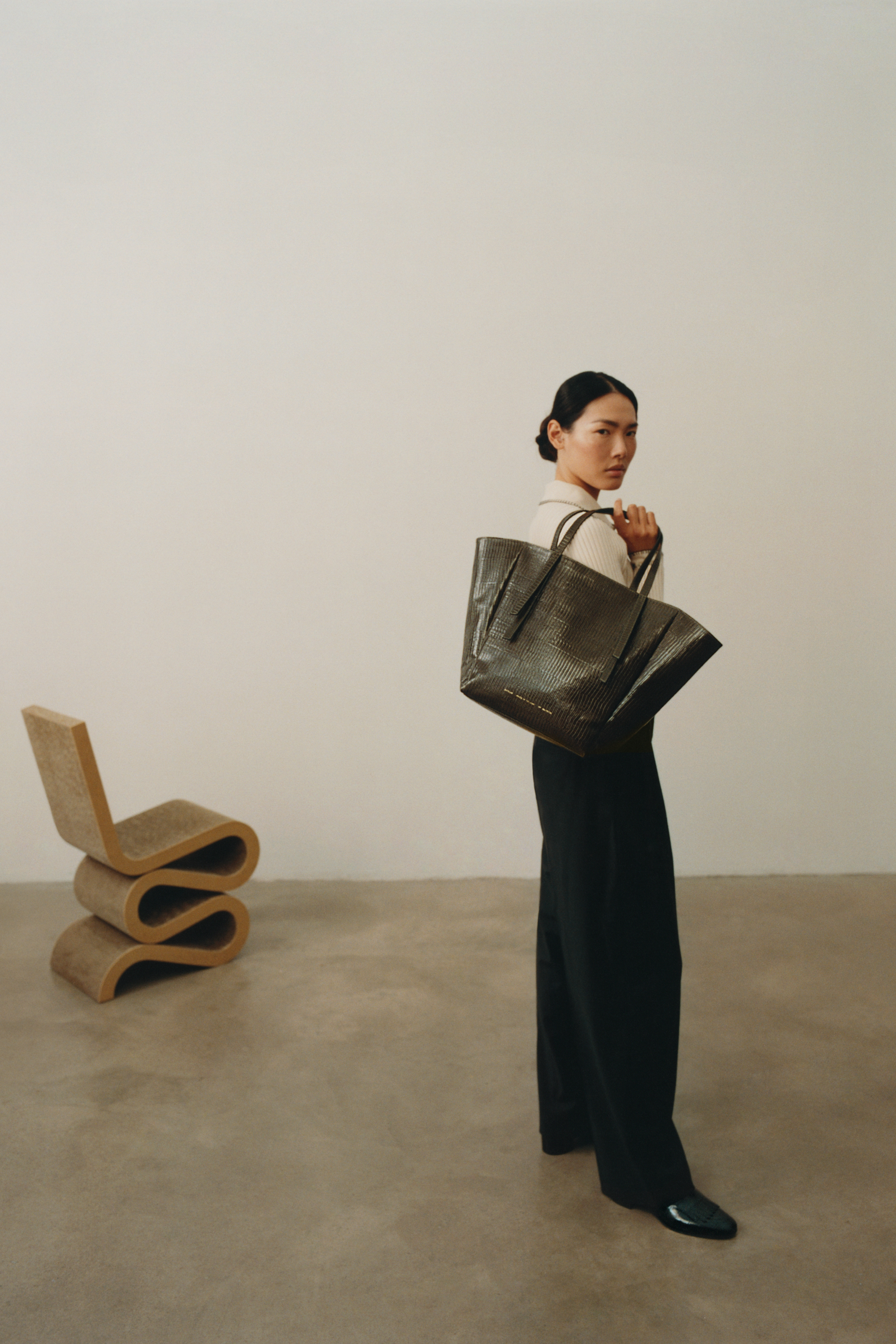
Warsaw-born Zofia Chylak studied to become an art historian. She segued into fashion, taking an internship at Proenza Schouler before deciding to go it alone. When she launched in 2014, ‘there were almost no young bag designers in Poland’, she says. Chylak found an immediate following – waitlists soon ballooned to 15,000 but the rapid escalation in interest felt at odds with Chylak herself. ‘In reality, we always wanted our production to be sustainable. We don’t do sales at the end of the season as we work hard to manage our stock to avoid waste. We couldn’t have expanded at such speed, anyway, as it was important to us to continue to work with people we knew, both in Poland and in Italy.’ Instead, she has been intentionally growing the brand at a manageable pace, year on year. ‘I think it’s a wonderful time for brands like mine, the time when you can really go out there with your brand even when you’re being based in countries not known on a fashion map. I think it was almost impossible 15 or 20 years ago. I feel very lucky.’ Look out for: the vintage-inspired ‘Clasp’ bag.
Hereu
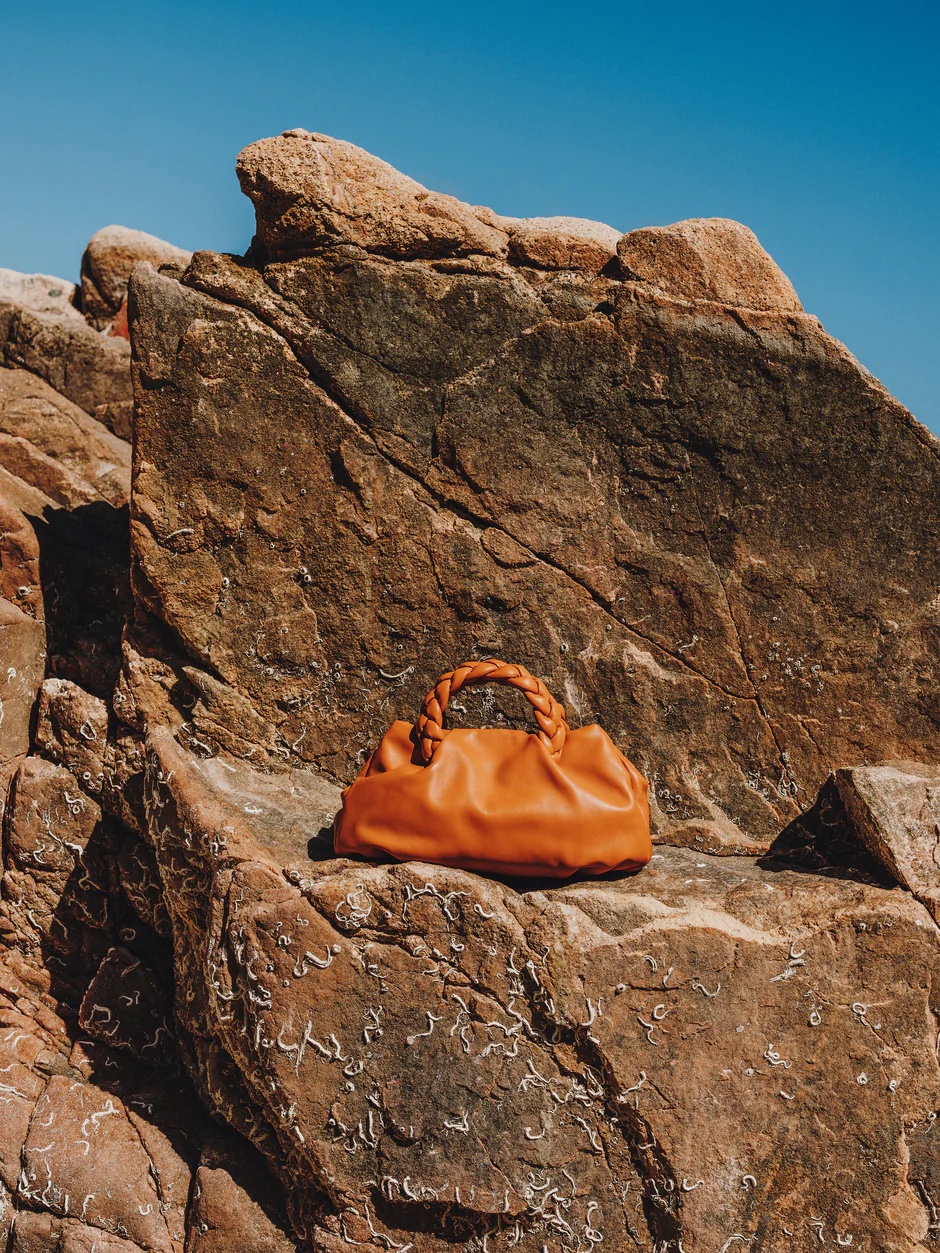
With their brand’s name Hereu meaning ‘heir’ in Catalan, designers José Bartolomé and Albert Escribano are striving to create little legacies to be enjoyed and passed on. Working with the belief that items of clothing and accessories can hold powerful memories, the designers say that many pieces recall significant items worn in the past. Along with shoes and other small leather goods, Hereu’s leather bags are crafted in Spain by a contingent of family-run manufacturers. Bartolomé and Escribano have made the artisanal knowledge of these producers part of the Hereu story, looking to them for expertise that shapes their designs. A Mediterranean spirit and an understated approach to dressing inform the brand’s boxy, leather-trimmed canvas totes, and supple handbags with plaited and knotted detailing. Look out for: The ‘Cala’ and ‘Cabassa’ canvas totes.
Savette
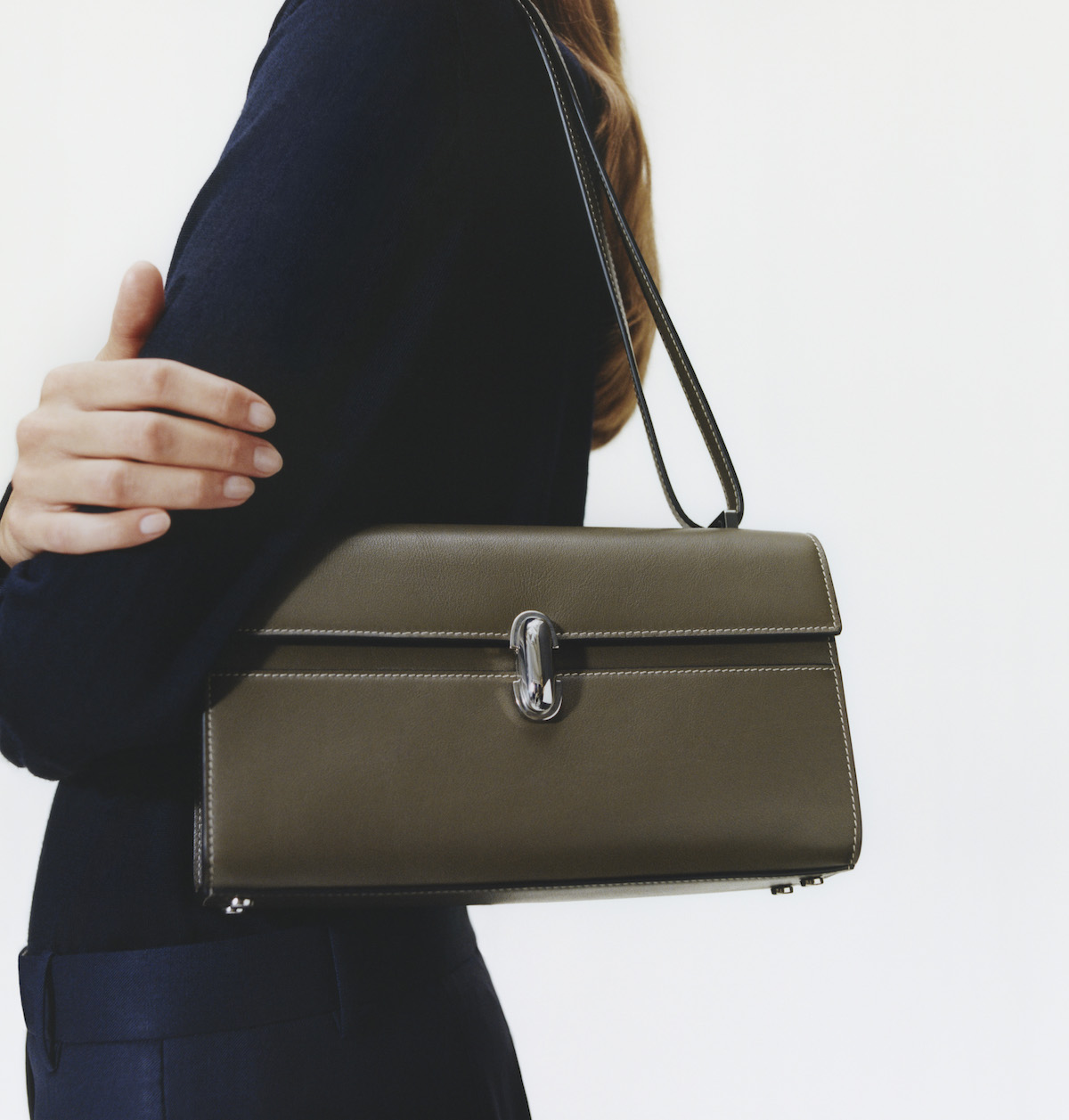
‘I noticed a growing disparity between contemporary and luxury markets, and felt that there was an opportunity for a high-quality but not completely unobtainable brand to offer an alternative,’ says New York-based Savette founder Amy Zurek. ‘The vast majority of luxury handbags available are made by large heritage houses, but I hoped that through quality, design and competitive price point, we could carve out a space for a new type of modern luxury brand.’ Eschewing fashion’s fascination with newness, she set out to create a bag ‘so timeless and classic that it could be passed through generations of women and get better with age – a new kind of heirloom’. Her formula is certainly working: over a thousand of the ‘Symmetry’ pochette bags sold in the first year of its launch, with certain colours continuing to sell out within weeks of restocking. It’s no wonder; Zurek brings a wealth of handbag knowledge having previously worked behind the scenes at The Row and Khaite. Look out for: the versatile ‘Symmetry 26’ which can be worn and carried three ways.
Daana Saakena
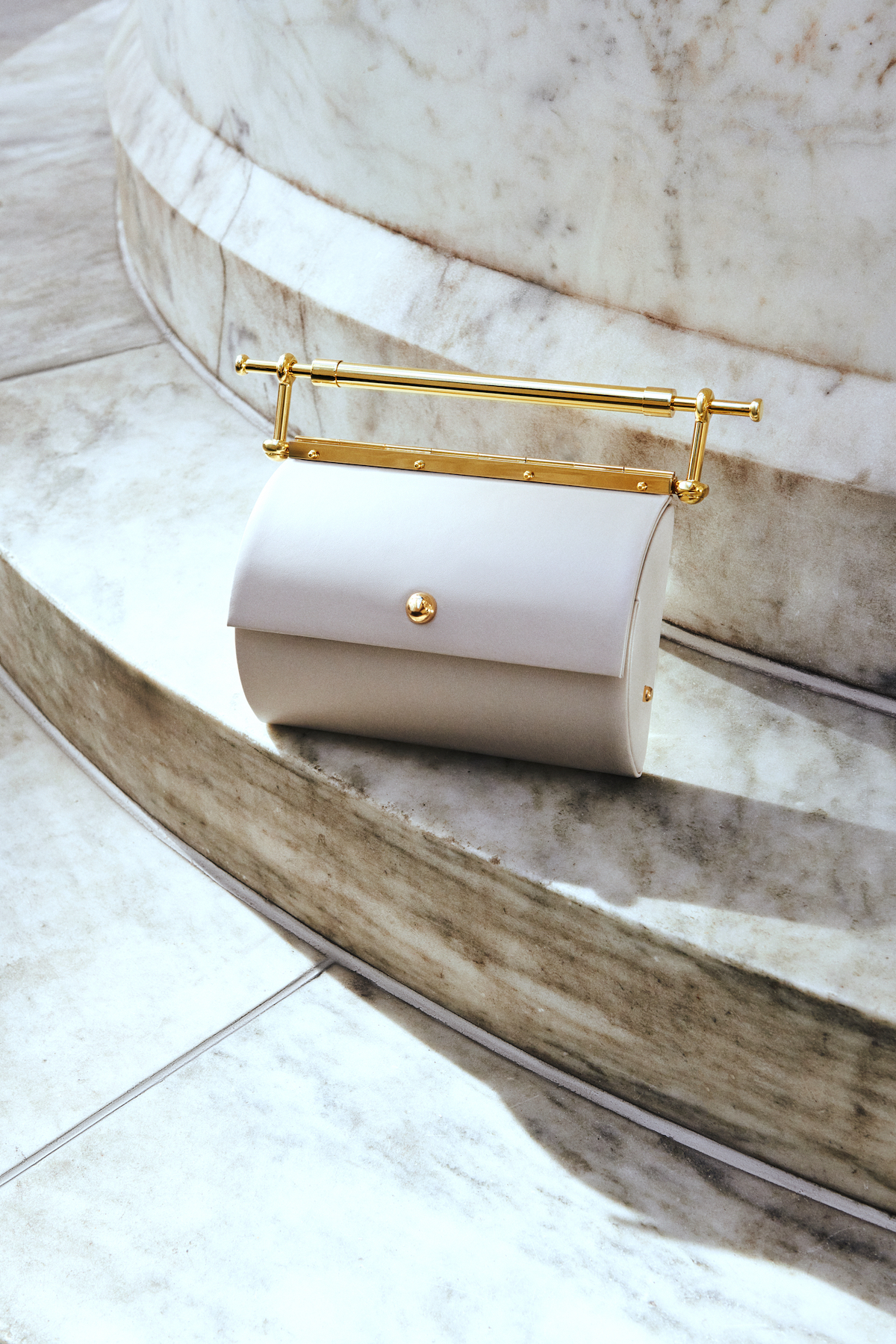
As a first-generation Lebanese American, Daana Saakena Diaz Madrid wanted to explore her own heritage for inspiration when conceptualising her brand after years working in the fashion industry. In fact, ’Daana means the most beautifully sized pearl in Arabic,’ explains Diaz Madrid. And thus, each handbag has a hidden pearl inside, custom cast by a jeweller in Florence. ‘The pearl represents my upbringing, my family, my history… it’s a dedication to my family roots,’ she says. Solid, structured bags, often with an elliptical body, are architectural while recalling vintage details, inspired by the designer’s mother, who collected antiques and handbags. Gold hardware – in the form of bar handles and stud fastenings – is already a brand signature. Due to the detailed construction, only a limited number of each style and colourway is produced each season. Look out for: the ‘Didi’ coin purse, which clips onto handbags and belt loops.
Tilly is a British writer, editor and digital consultant based in New York, covering luxury fashion, jewellery, design, culture, art, travel, wellness and more. An alumna of Central Saint Martins, she is Contributing Editor for Wallpaper* and has interviewed a cross section of design legends including Sir David Adjaye, Samuel Ross, Pamela Shamshiri and Piet Oudolf for the magazine.
-
 A compact Scottish home is a 'sunny place,' nestled into its thriving orchard setting
A compact Scottish home is a 'sunny place,' nestled into its thriving orchard settingGrianan (Gaelic for 'sunny place') is a single-storey Scottish home by Cameron Webster Architects set in rural Stirlingshire
-
 7 colours that will define 2026, from rich gold to glacier blue
7 colours that will define 2026, from rich gold to glacier blueThese moody hues, versatile neutrals and vivid shades will shape the new year, according to trend forecasters
-
 In Norway, discover 1000 years of Queer expression in Islamic Art
In Norway, discover 1000 years of Queer expression in Islamic Art'Deviant Ornaments' at the National Museum of Norway examines the far-reaching history of Queer art